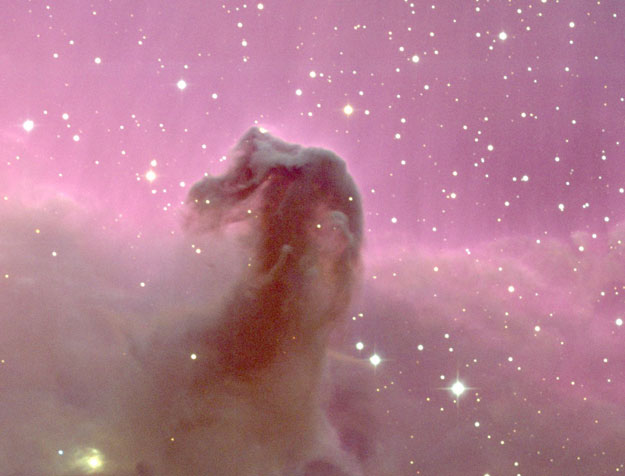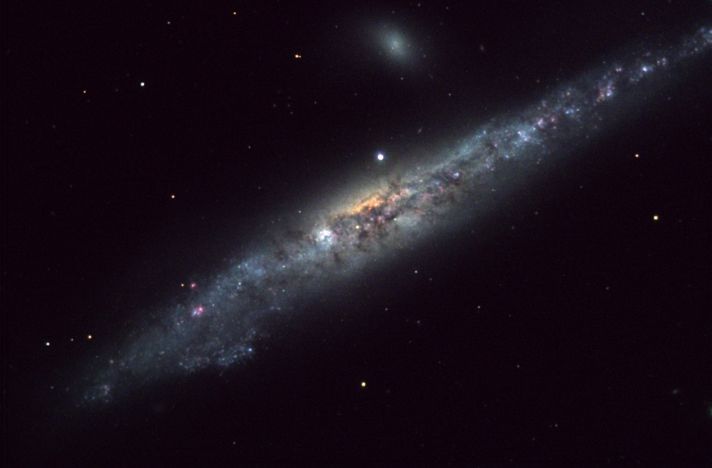Planetary Nebulae & Galaxies
Most pics courtesy of NASA
The Rotten Egg Planetary Nebula


Explanation: Not all evolving stars eject gas clouds that look like people. OH231.8+4.2 was a star much like our Sun that ran out of nuclear fuel to fuse in its core. It has therefore entered the planetary nebula phase, where it throws off its outer atmosphere into space, leaving a core that will become a white dwarf star. Every Sun-like star creates a different planetary nebula though, and OH231.8+4.2's looks eerily like a person! Spectacular jets of streaming gas can be seen in this recently released photograph by the Hubble Space Telescope. The gas cloud has been dubbed the Rotten Egg Planetary Nebula because it contains unusually high amounts of sulfur, an element that, when combined with other elements, can smell like a rotten egg. This young planetary nebula will likely change its appearance over the next few thousand years and eventually disperse.

Explanation: Like delicate cosmic petals, these clouds of interstellar dust and gas have blossomed 1,300 light years away in the fertile star fields of the constellation Cepheus. Sometimes called the Iris Nebula and dutifully cataloged as NGC 7023, this is not the only nebula in the sky to evoke the imagery of flowers. Still, the beautiful digital image shows off the Iris Nebula's range of colors and symmetries in impressive detail. Nebular material is seen to surround a massive, hot, young star, still in its formative years. The telltale reddish glow of atomic hydrogen gas energized by the star's invisible but intense ultraviolet light flanks the bright central region. Yet the dominant color of the nebula is blue, characteristic of dust grains reflecting starlight. Dark, obscuring clouds of dust and cold molecular gas are also present and can lead the eye to see other convoluted and fantastic shapes. Infrared observations indicate that this nebula may contain complex carbon molecules known as PAHs. As shown here, the Iris Nebula is about 6 light years across.

Explanation: One of the most identifiable nebulae in the sky, the Horsehead Nebula in Orion, is part of a large, dark, molecular cloud. Also known as Barnard 33, the unusual shape was first discovered on a photographic plate in the late 1800s. The red glow originates from hydrogen gas predominantly behind the nebula, ionized by the nearby bright star Sigma Orionis. The darkness of the Horsehead is caused mostly by thick dust, although the lower part of the Horsehead's neck casts a shadow to the left. Streams of gas leaving the nebula are funneled by a strong magnetic field. Bright spots in the Horsehead Nebula's base are young stars just in the process of forming. Light takes about 1500 years to reach us from the Horsehead Nebula. The above image was taken with the 0.9-meter telescope at Kitt Peak National Observatory.

Explanation: Few astronomical sights excite the imagination like the nearby stellar nursery known as the Orion Nebula. The Nebula's glowing gas surrounds hot young stars at the edge of an immense interstellar molecular cloud only 1500 light-years away. The Great Nebula in Orion can be found with the unaided eye just below and to the left of the easily identifiable belt of three stars in the popular constellation Orion. The above image has been contrast balanced to bring out Orion's detail in spectacular fashion. Visible simultaneously are the bright stars of the Trapezium in Orion's heart, the sweeping lanes of dark dust that cross the center, the pervasive red glowing hydrogen gas, and the blue tinted dust that reflects the light of newborn stars. The whole Orion Nebula cloud complex, which includes the Horsehead Nebula, will slowly disperse over the next 100,000 years.

Explanation: While searching the skies above 18th century France for comets, astronomer Charles Messier diligently recorded this object as number 27 on his list of things which are definitely not comets. So what is it? Well, 20th century astronomers would classify it as a Planetary Nebula ... but it's not a planet either, even though it may appear round and planet-like in a small telescope. Messier 27 (M27) is now known to be an excellent example of a gaseous emission nebula created as a sun-like star runs out of nuclear fuel in its core. The nebula forms as the star's outer layers are expelled into space, with a visible glow generated by atoms excited by the dying star's intense but invisible ultraviolet light. Known by the popular name of the Dumbbell Nebula, the beautifully symmetric interstellar gas cloud is about 1,200 light-years away in the constellation Vulpecula. This gorgeous synthetic color picture of M27 was produced during testing of one of the European Southern Observatory's Very Large Telescopes.

Explanation: Is there a monster in IC 1396? Known to some as the Elephant's Trunk Nebula, parts of gas and dust clouds of this star formation region may appear to take on foreboding forms, some nearly human. The only real monster here, however, is a bright young star too far from Earth to hurt us. Energetic light from this star is eating away the dust of the dark cometary globule near the top of the above image. Jets and winds of particles emitted from this star are also pushing away ambient gas and dust. Nearly 3,000 light-years distant, the relatively faint IC 1396 complex covers a much larger region on the sky than shown here, with an apparent width of more than 10 full moons.

Explanation: Nearby galaxy NGC 6822 is irregular in several ways. First, the galaxy's star distribution merits a formal classification of dwarf irregular, and from our vantage-point the small galaxy appears nearly rectangular. What strikes astronomers as more peculiar, however, is NGC 6822's unusually high abundance of HII regions, locales of ionized hydrogen that surround young stars. Large HII regions, also known as emission nebulas, are visible surrounding the small galaxy, particularly toward the upper right. Toward the lower left are bright stars that are loosely grouped into an arm. Pictured above, NGC 6822, also known as Barnard's Galaxy, is located only about 1.5 million light years away and so is a member of our Local Group of Galaxies. The galaxy, home to famous nebulas including Hubble V, is visible with a small telescope toward the constellation of Sagittarius.

Explanation: NGC 4631 is a big beautiful spiral galaxy seen edge-on only 25 million light-years away towards the small northern constellation Canes Venatici. This galaxy's slightly distorted wedge shape suggests to some a cosmic herring and to others the popular moniker of The Whale Galaxy. Either way, it is similar in size to our own Milky Way. In this gorgeous color image, the Whale's dark interstellar dust clouds, young bright blue star clusters, and purplish star forming regions are easy to spot. A companion galaxy, the small elliptical NGC 4621 appears above the Whale Galaxy. Out of view off the lower left corner of the picture lies another distorted galaxy, the hockey stick-shaped NGC 4656. The distortions and mingling trails of gas and dust detected at other wavelengths suggest that all three galaxies have had close encounters with each other in their past. The Whale Galaxy is also known to have spouted a halo of hot gas glowing in x-rays.
|